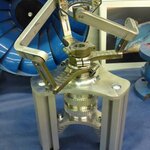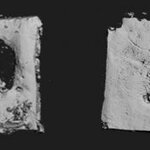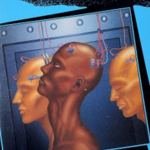Technology

People are already attached to their smartphones but if you have ever been in an airport waiting area and watched them scramble for outlets, you know recharging is not in the 21st century yet.
There are some solar recharging devices but they are more novelty than practical. A new paper in Nano Letters highlights a battery that can be woven into clothing fibers or incorporated into watchbands - and it even has solar cells for recharging.
Taek-Soo Kim, Jung-Yong Lee, Jang Wook Choi and colleagues explain that electronic textiles have the potential to integrate smartphone functions into…

About 11 million smokers in the United States own a smartphone - they have apps to do almost anything, including quitting smoking.
Like weight loss or any other behavioral change, their ability to help is limited. But there are some basic strategies most likely to work, and most popular anti-smoking apps for iPhones or Androids lack even those, according to a new study in the American Journal of Preventive Medicine.
"Quit-smoking apps are an increasingly available tool for smokers," says lead author Lorien Abroms, ScD, an associate professor of Prevention and Community Health at the…

Kids love penguins. They sing and dance in cartoons, they waddle like Charlie Chaplin on land - but underwater, they are all business, accelerating from 0 to 15 miles per hour in less than a second.
At the American Physical Society's Division of Fluid Dynamics meeting next week in Pittsburgh, Flavio Noca, who teaches aerodynamics at the University of Applied Sciences Western Switzerland (hepia) and the Swiss Federal Institute of Technology (EPFL), will present a penguin-inspired propulsion system that uses a novel spherical joint mechanism. Based on a penguin's shoulder-and-wing…

An automated system, the Child Health Improvement through Computer Automation system (CHICA), helps pediatricians focus on the specific health needs of each patient in the short time allotted for preventive care and improves autism screening rates by identifying at-risk children at the 24-month visit., according to a new paper.
Nationwide children typically are not diagnosed with autism until age 4½ or 5 years.
Approximately 1 in 88 children has been identified with an autism spectrum disorder, according to estimates from the CDC's Autism and Developmental Disabilities Monitoring…

EcoBot, a robot that can function completely on its own by collecting waste and converting it into electricity, has an "engine room" that is modeled on the human heart.The artificial device incorporates shape memory alloys - smart materials - and has been tested,The results are in Bioinspiration and Biomimetics.
Researchers based at the Bristol Robotics Laboratory, a joint venture between the University of the West of England and University of Bristol, have created four generations of EcoBots in the past 10 years, each of which is powered by electricity-generating microbial fuel cells that…

A bio patch bone-regeneration kit uses a collagen platform seeded with particles containing the genes needed for producing bone to regenerate missing or damaged bone - basically, it puts DNA into a nano-sized particle that delivers bone-producing instructions directly into cells.
In experiments, the gene-encoding bio patch successfully regrew bone fully enough to cover skull wounds in test animals. It also stimulated new growth in human bone marrow stromal cells in lab experiments.
The patch directly delivered bone-producing instructions by using a piece of DNA that encodes for a…

A new computer model says it can predict, by census block group, where burglaries are likely to occur.
Using the model developed by a University of California Riverside sociologist Prof. Robert Nash Parker, the Indio police department in souther California has developed interventions to address the problem, and can better anticipate hot spots of criminal activity and deploy officers accordingly. They say they have had an 8 percent decline in thefts in the first nine months of 2013 - too small a variation to attribute to just the model but it certainly hasn't hurt.
"This is the wave of the…

The world's best supercomputers are staggeringly inefficient and energy-intensive machines and the human brain is staggering in its own right; putting a brain's information into CDs would require a skyscraper full of them and, unlike MP3s, there is no way to just create a compression algorithm.
The 86 billion neurons in our brains are connected by synapses that not only complete myriad logic circuits, they also they continuously adapt to stimuli, strengthening some connections while weakening others. We call that process learning and its rapid, highly efficient computational processes can't…

NASA's Lunar Atmosphere and Dust Environment Explorer (LADEE) was launched in early September and arrived in orbit around the Moon in October.
Its mission is to probe the Moon’s environment but it’s also carrying an interesting piece of technology - a new laser terminal. ESA’s Optical Ground Station in Spain’s Canary Islands was upgraded with an advanced laser terminal that can communicate with LADEE and they report that they have received signals from LADEE 400,000 KM away - at a rate many times faster than possible with traditional radio waves - which means 3 stations on Earth are…

Both drug-eluting stents (DES) with biocompatible polymers and DES with biodegradable polymers were associated with low major adverse coronary events, demonstrating the non-inferiority of the biocompatible polymer stents in patients undergoing percutaneous coronary intervention (PCI).
The findings of the SORT-OUT VI trial were presented today at the 25th annual Transcatheter Cardiovascular Therapeutics (TCT) scientific symposium. Sponsored by the Cardiovascular Research Foundation (CRF), TCT is the world's premier educational meeting specializing in interventional cardiovascular medicine.…